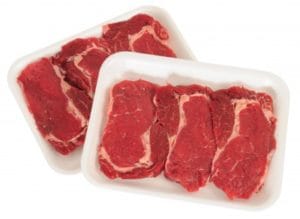Consumer Reports finds that shoppers have lots of ‘no antibiotics’ choices, but they have to learn how to decipher product labeling

Many U.S. grocery stores now offer at least some meat or poultry that is raised without antibiotics, sometimes even at below-average prices for all meats of that type, but shoppers must become savvy about reading labeling to get products that live up to “no antibiotics administered”-type claims, according to new research from Consumer Reports.
The declining effectiveness of antibiotics has become a national public-health crisis, leading doctors and scientists to call for much more careful use of antibiotics so that disease-causing organisms don’t become immune to them. But since approximately 80 percent of all antibiotics sold in the U.S. are used by the meat and poultry industry to make animals grow faster or to prevent disease in crowded and unsanitary conditions, both supermarkets and consumers can have a major impact on this problem through their purchasing decisions.
To determine whether supermarkets are making products raised without antibiotics available to their customers and how consumers feel about them, we polled consumers, contacted companies directly, and in March and April 2012 sent 36 “secret shoppers” into 136 grocery stores in 23 states. The shoppers reported back on more than 1,000 raw meat and poultry products that carried a claim about antibiotics or were labeled as organic. Just to be clear, shoppers’ findings represent a snapshot of offerings on the day they visited a particular store, and may not be indicative of products offered on other days or at other branches. We also conducted additional labeling research in 2011 and continue to analyze the claims in the market.
What shoppers found: Big differences among retailers. Whole Foods, for example, guarantees that all meat and poultry sold in its stores is never treated with antibiotics. Shoppers also found wide selections of meat and poultry raised without antibiotics at Giant, Hannaford, Shaw’s, and Stop & Shop. At the other extreme, shoppers at Sam’s Club, Food 4 Less, Food Lion, and Save-A-Lot stores could not find any such meat or poultry.
What our poll found: In a nationwide poll conducted by the Consumer Reports National Research Center, 57 percent of consumers indicated they had meat and poultry raised without antibiotics available at their local supermarkets. In that poll, 61 percent of consumers also indicated they would pay 5 cents or more a pound extra; and 37 percent indicated they would pay a dollar a pound or more extra for meat and poultry raised without antibiotics.
But the data our secret shoppers gathered on the prices of “no antibiotics administered” products at the 119 stores that carried them indicated they can actually be found at lower prices than you might expect. In March, the national average price for all chicken breasts, including conventional, was $3.17 per pound. Yet our shoppers found chicken breasts that had been raised without antibiotics at QFC for $2.99 per pound and on sale at Whole Foods for $1.99 per pound. The most expensive such product that they saw was organic rib-eye steak for $19.99 a pound at several Kroger stores. The least expensive products without antibiotics were whole chickens at Publix and Jewel-Osco, and chicken drumsticks at several Trader Joe’s locations, all for $1.29 per pound.
Getting the biggest bang for your bucks also requires being able to decipher the sometimes-confusing array of labeling with claims that antibiotics weren’t used to make sure you’re choosing products that actually make meaningful claims.
Below you’ll find a guide to help you do just that. Download a PDF of our full report, “Meat on Drugs,” and visit NotInMyFood.org for more on food safety.

